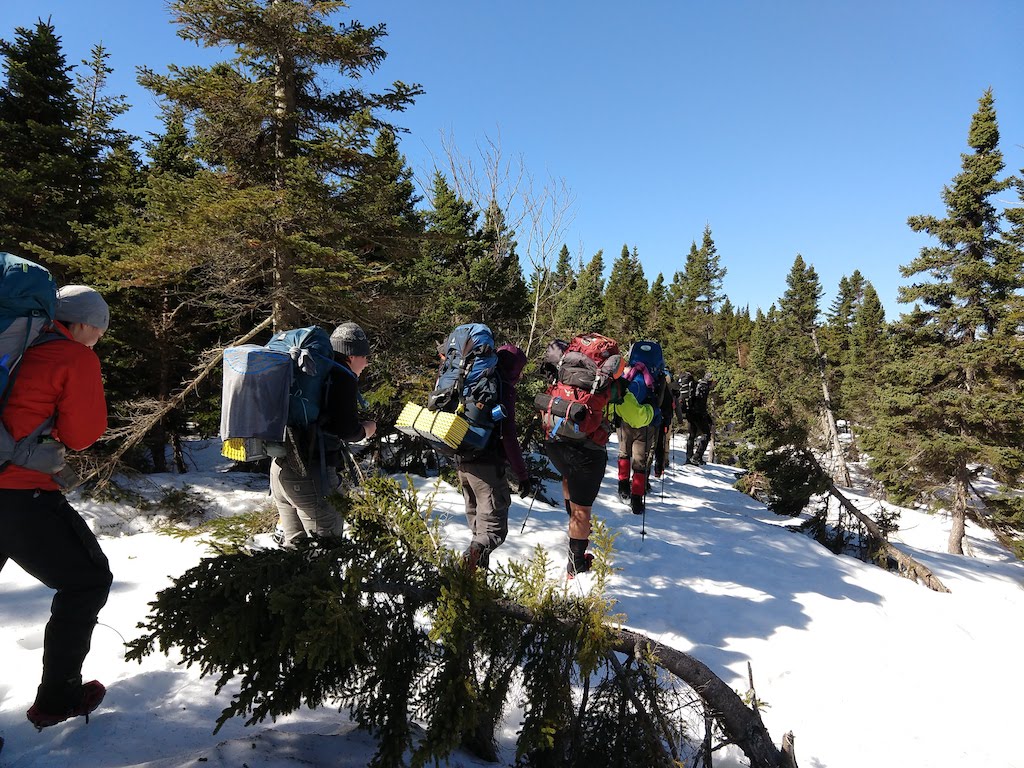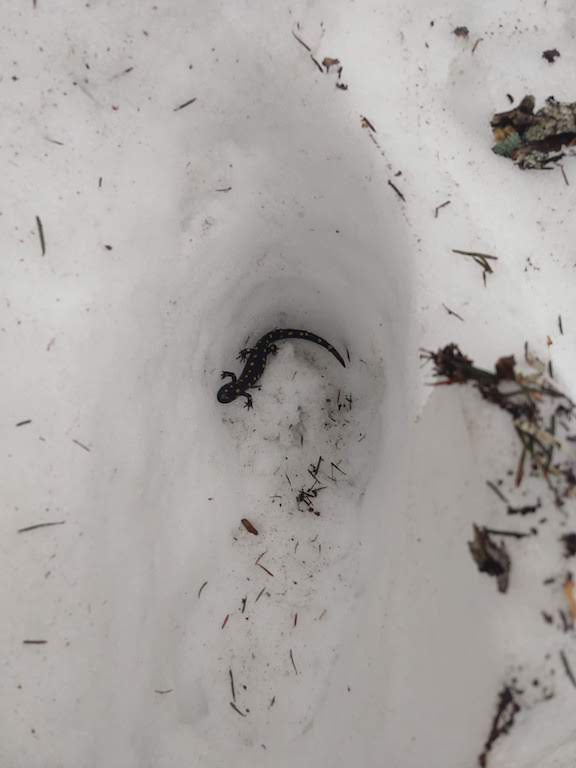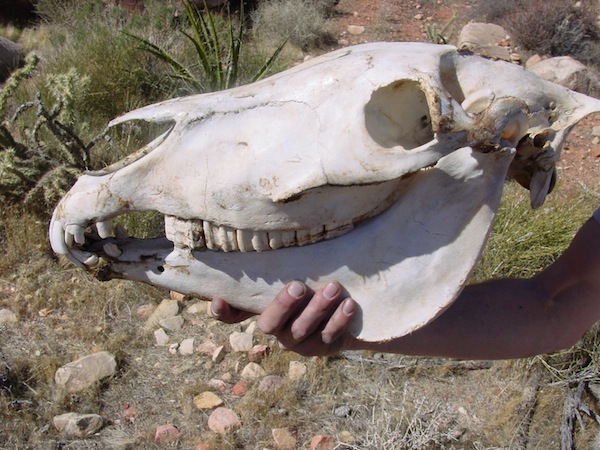Leave No Trace Trainer Overview LNT Principles are crucial for minimizing camping and climbing impacts on busy peaks. Adventure Consultants
Every time we step into the backcountry we have an impact. We walk on terrain that may be changed by our method of travel. We build fires and go to the bathroom. We pick up interesting things and often – usually unintentionally – leave trash. The Leave No Trace Trainer program was designed to help you mitigate these impacts and to teach others how to do the same.
Principles of Leave No Trace Each student in the Leave No Trace Trainer course will be assigned to prepare a short lesson on one of the following principles of Leave No Trace. This is an important part of the Leave No Trace Trainer course curriculum, as the best way to commit knowledge is not only to learn, but also to teach to others.
Plan Ahead and Prepare
Know the regulations and special concerns for the area you'll visit.
Prepare for extreme weather, hazards, and emergencies.
Schedule your trip to avoid times of high use.
Visit in small groups when possible. Consider splitting larger groups into smaller groups.
Repackage food to minimize waste.
Use a map and compass to eliminate the use of marking paint, rock cairns or flagging.
Travel and Camp on Durable Surfaces
Good trails decrease trail braiding. Jason Martin
Durable surfaces include established trails and campsites, rock, gravel, dry grasses or snow.
Protect riparian areas by camping at least 200 feet from lakes and streams.
Good campsites are found, not made. Altering a site is not necessary.
In popular areas:
Concentrate use on existing trails and campsites.
Walk single file in the middle of the trail, even when wet or muddy.
Keep campsites small. Focus activity in areas where vegetation is absent.
In pristine areas:
Disperse use to prevent the creation of campsites and trails.
Avoid places where impacts are just beginning.
Dispose of Waste Properly
Pack it in, pack it out. Inspect your campsite and rest areas for trash or spilled foods. Pack out all trash, leftover food, and litter.
Deposit solid human waste in catholes dug 6 to 8 inches deep at least 200 feet from water, camp, and trails. Cover and disguise the cathole when finished.
Pack out toilet paper and hygiene products.
To wash yourself or your dishes, carry water 200 feet away from streams or lakes and use small amounts of biodegradable soap. Scatter strained dishwater.
Leave What You Find
Preserve the past: examine, but do not touch, cultural or historic structures and artifacts.
Leave rocks, plants and other natural objects as you find them.
Avoid introducing or transporting non-native species.
Do not build structures, furniture, or dig trenches.
Minimize Campfire Impacts
Campfires can cause lasting impacts to the backcountry. Use a lightweight stove for cooking and enjoy a candle lantern for light.
Where fires are permitted, use established fire rings, fire pans, or mound fires.
Keep fires small. Only use sticks from the ground that can be broken by hand.
Burn all wood and coals to ash, put out campfires completely, then scatter cool ashes.
Respect Wildlife
Observe wildlife from a distance. Do not follow or approach them.
Never feed animals. Feeding wildlife damages their health, alters natural behaviors, and exposes them to predators and other dangers.
Protect wildlife and your food by storing rations and trash securely.
Control pets at all times, or leave them at home.
Avoid wildlife during sensitive times: mating, nesting, raising young, or winter.
Be Considerate of Other Visitors
Respect other visitors and protect the quality of their experience.
Be courteous. Yield to other users on the trail.
Step to the downhill side of the trail when encountering pack stock.
Take breaks and camp away from trails and other visitors.
Let nature's sounds prevail. Avoid loud voices and noises.
The Leave No Trace Trainer course is perfect for anyone who recreates in the outdoors as well as those who work as eductors for others, such as parents, Scout groups, school groups and clubs.
VIDEO
Leave No Trace Trainer Curriculum The Leave No Trace Trainer Course was designed to be a two-day program with two objectives. The first is for students to have a better understanding of the prinicpals of Leave No Trace, and the second is to complete some kind of wilderness objective.
Day 1: On the first day, the group will meet at the Institute at 8am (1515 12th Street Bellingham, WA 98225).
● Introduction to Leave No Trace
● Principles of Education
● Principle 1 - Plan ahead and prepare
● Equipment and food check
● Shuttle to trailhead
● Hike in
● Principle 2 - Travel and Camp on Durable Surfaces
● Set up camp
● Principle 3 - Dispose of Waste Properly
● Introduce Action Plans
Lodging: Backcountry camp
Day 2: The second day will begin at camp around 8am and will end at the Institute around 5pm.
● Break down camp
● Begin the day hike
● Principle 4 - Leave what you find
● Principle 5 - Minimize campfires
● Principle 6 - Be considerate of other visitors
● Principle 7 - Respect Wildlife
● Authority of the Resource
● Share/ discuss Action Plans
● Hike out
● Debrief & course evaluation
These courses will take place on a short backpacking trip or on a basic alpine climb in various parts of the North Cascades. Some objectives include:
- The Chuckanuts
- Table Mountain and Artist's Point
- Winchester Lookout
- Ruth Mountain
- Mt. Loop Highway
- Glacier Peak Wilderness
The final objective of the course will be decided by the course instructor close to the trip departure date.
Leave No Trace Trainer Dates & Details
June 01 - June 02, 2024
Aug 17 - Aug 18, 2024
Oct 05 - Oct 06, 2024
Enrollment Details
Minimum: 4 students Maximum: 12 students
Discounted Group Program Pricing
In remote settings employing LNT principles can help you greatly reduce your impacts. Shawn Olson
AAI has discounted rates for outdoor education groups (Scout groups, school groups, non-profit groups, etc.) that would like to obtain LNT Certification. These prices are based on the group size.
Private Programming
The Leave No Trace Trainer program can be offered on a private basis in any location where AAI operates! The pricing varies between locations. Please note that private LNT programs must meet the enrollment requirements. Please contact the AAI office for more information.


